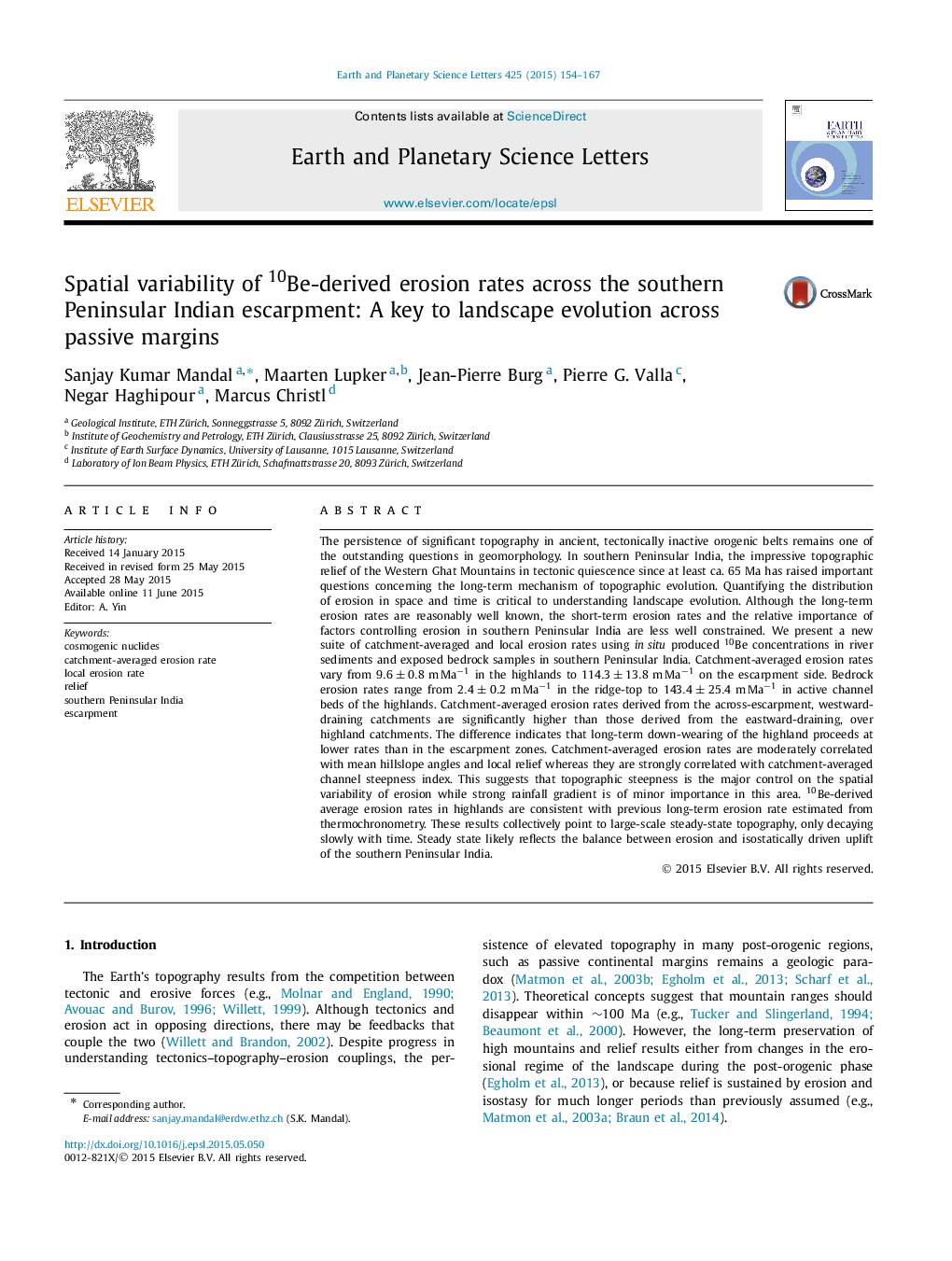| کد مقاله | کد نشریه | سال انتشار | مقاله انگلیسی | نسخه تمام متن |
|---|---|---|---|---|
| 6428277 | 1634731 | 2015 | 14 صفحه PDF | دانلود رایگان |

- We provide first dataset of 10Be-derived catchment-averaged erosion rates in southern Peninsular India.
- Catchment-averaged erosion rates vary from 9.6±0.8 to 114.3±13.8 mMaâ1.
- Catchment-averaged erosion rate shows strong linear correlation with mean basin channel steepness index.
- Much higher erosion rates derived from the escarpment side than the highland plateau.
The persistence of significant topography in ancient, tectonically inactive orogenic belts remains one of the outstanding questions in geomorphology. In southern Peninsular India, the impressive topographic relief of the Western Ghat Mountains in tectonic quiescence since at least ca. 65 Ma has raised important questions concerning the long-term mechanism of topographic evolution. Quantifying the distribution of erosion in space and time is critical to understanding landscape evolution. Although the long-term erosion rates are reasonably well known, the short-term erosion rates and the relative importance of factors controlling erosion in southern Peninsular India are less well constrained. We present a new suite of catchment-averaged and local erosion rates using in situ produced 10Be concentrations in river sediments and exposed bedrock samples in southern Peninsular India. Catchment-averaged erosion rates vary from 9.6±0.8 mMaâ1 in the highlands to 114.3±13.8 mMaâ1 on the escarpment side. Bedrock erosion rates range from 2.4±0.2 mMaâ1 in the ridge-top to 143.4±25.4 mMaâ1 in active channel beds of the highlands. Catchment-averaged erosion rates derived from the across-escarpment, westward-draining catchments are significantly higher than those derived from the eastward-draining, over highland catchments. The difference indicates that long-term down-wearing of the highland proceeds at lower rates than in the escarpment zones. Catchment-averaged erosion rates are moderately correlated with mean hillslope angles and local relief whereas they are strongly correlated with catchment-averaged channel steepness index. This suggests that topographic steepness is the major control on the spatial variability of erosion while strong rainfall gradient is of minor importance in this area. 10Be-derived average erosion rates in highlands are consistent with previous long-term erosion rate estimated from thermochronometry. These results collectively point to large-scale steady-state topography, only decaying slowly with time. Steady state likely reflects the balance between erosion and isostatically driven uplift of the southern Peninsular India.
Journal: Earth and Planetary Science Letters - Volume 425, 1 September 2015, Pages 154-167